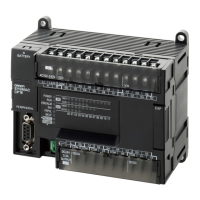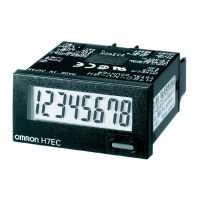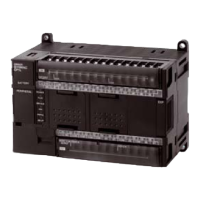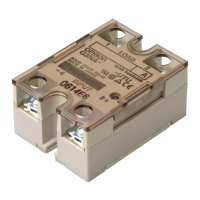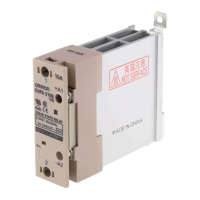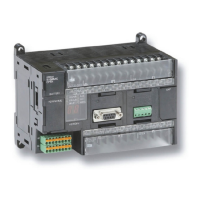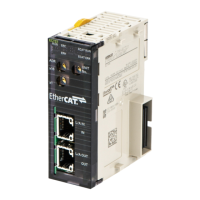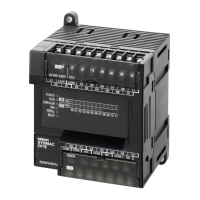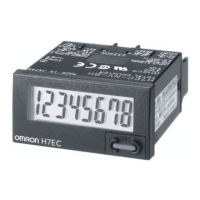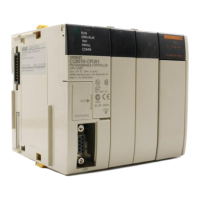14 Communications Performance and Communications Load
14-6
NJ/NX-series CPU Unit Built-in EtherNet/IP Port User’s Manual (W506)
14-2 Adjusting the Communications Load
In an Ethernet network using an Ethernet switch, the network bandwidth is not shared by all of the
nodes; independent transmission paths are established between individual nodes through the Ethernet
switch.
A dedicated communications buffer is established in the Ethernet switch for communications between
the nodes and full-duplex communications (simultaneous transmission and reception) are performed
asynchronously with other transmission paths. The communications load in other transmission paths
does not affect communications, so packet collisions do not occur and stable, high-speed communica-
tions can be performed.
The Ethernet switch functions shown in the following table determine the performance of tag data links.
The following table shows the setting ranges of the tag data link settings that can be made for a built-in
EtherNet/IP port.
When the tag data link settings exceed the capabilities of the Ethernet switch being used, increase the
packet interval (RPI) value. Particularly when using an Ethernet switch that does not support multicast
filtering, the settings must be made considering that multicast packets will be sent even to nodes with-
out connection settings.
If the Network Configurator is used to set the connection type in the connection settings to a mul-
ticast connection, multicast packets will be used. If the connection type is set to a point-to-point
connection, multicast packets are not used.
In addition, if the required tag data link performance cannot be achieved with the Ethernet switch’s
capabilities, re-evaluate the overall network configuration and correct it by taking steps such as select-
ing a different Ethernet switch or splitting the network.
The following sections show how to check the device bandwidth being used by the tag data links in the
designed network, and how to set the appropriate values.
Item Description
Buffer capacity This is the amount of data that can be buffered when packets accumulate at
the Ethernet switch.
Multicast filtering This function transfers multicast packets to specific nodes only.
QoS function This function performs priority control on packet transfers.
Item Description
NX-series CPU Unit NJ-series CPU Unit
NX701 NX1P2
Unit ver-
sion 1.00 to
1.02
Unit ver-
sion 1.03 or
later
Network bandwidth Physical Ethernet baud
rate
1,000 Mbps 100 Mbps or 10 Mbps
Allowed tag data link
communications
bandwidth
Maximum number of tag
data link packets that can
be processed in 1 second
(pps: packets per second)
40,000 pps
max. (total of
40,000 with
two ports)
1,000 pps
max.
3,000 pps
max.
Connection
resources
Number of connections
that can be established
256 max. (total
of 512 with two
ports)
32 max.
Packet interval (RPI:
Requested Packet
Interval)
Refresh period for tag data 0.5 to 10,000
ms in 0.5-ms
increments
2 to 10,000
ms in 1-ms
increments
10 to 10,000
ms in 1-ms
increments
1 to 10,000
ms in 1-ms
increments
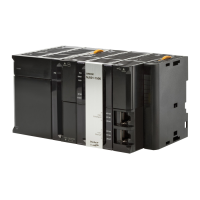
